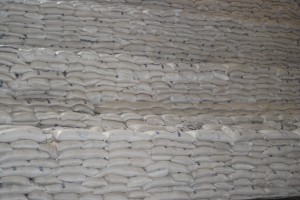As rising or fluctuating food prices continue to affect individual food security and the ability of countries to plan for the food needs of their people, a new tool has been developed to provide an early warning system of extreme price variability.
The Excessive Food Price Variability Early Warning System developed by the International Food Policy Research Institute (IFPRI) will help policy makers to better predict likely food price pattern in the near future.
“For the first time ever, there is an instrument to measure periods of extreme price variability,” Maximo Torero, director of IFPRI’s Markets, Trade, and Institutions Division said during the launch of the tool on Wednesday.
He said the new tool will help to reduce inconsistent information on price variability on the global level by providing timely and transparent market information which can be utilised by policy makers to avert food price crises.
The tool that is updated daily forewarns policymakers and humanitarian agencies of periods of time with excessive food price variability. Torero told journalists in a teleconference that this new tool measures excessive food price variability and is the only mechanism currently available to identify time spans of increased price variability.
“Policymakers need consistent tools to identify periods of increased price variability,” says Carlos Martins Filho, IFPRI senior research fellow. “With better and more precise information, they can devise policies to mitigate the impacts of volatility on both producers and consumers, particularly the poorest consumers in developing countries.”
Based on sophisticated statistical modelling (NEXQ: Nonparametric Extreme Quantile Model), this first-of-its kind tool provides daily price variability ratings for four major crops—hard wheat, soft wheat, corn, and soybeans. Data for the model are obtained from closing prices of futures contracts traded on the Chicago Board of Trade and, in the case of hard wheat, the Kansas Board of Trade.
Filho says accurate and transparent market information is important for addressing food price volatility and achieving the ultimate goal of improving food security, especially among poor people in developing countries.
While it is not clear how this will help African countries whose agriculture produce is largely not subject to an organised market based system, IFPRI says the tool is especially timely and important as it supports two of the recommendations in the “Action Plan on Food Price Volatility and Agriculture” issued by the G20 Agriculture Ministers on June in Paris.
“First, it provides information to the Agriculture Market Information System (AMIS) on price variability in global markets and shows when periods of excessive price variability are occurring and how long they last. Second, it supports the design of emergency humanitarian food reserves to be coordinated by the World Food Programme. It provides policymakers and others with a global trigger mechanism to develop country-level contingency plans, including the need to release and use grain reserves during periods of extreme price variability,” IFPRI said in a statement.
Ultimate Media

